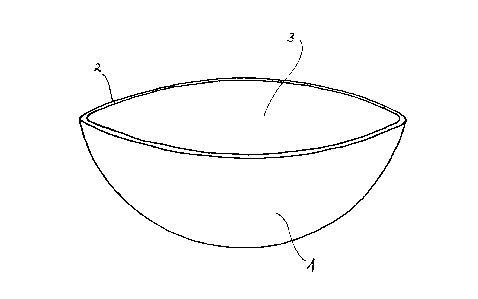Une partie des informations de ce site Web a été fournie par des sources externes. Le gouvernement du Canada n'assume aucune responsabilité concernant la précision, l'actualité ou la fiabilité des informations fournies par les sources externes. Les utilisateurs qui désirent employer cette information devraient consulter directement la source des informations. Le contenu fourni par les sources externes n'est pas assujetti aux exigences sur les langues officielles, la protection des renseignements personnels et l'accessibilité.
L'apparition de différences dans le texte et l'image des Revendications et de l'Abrégé dépend du moment auquel le document est publié. Les textes des Revendications et de l'Abrégé sont affichés :
| (12) Demande de brevet: | (11) CA 2299213 |
|---|---|
| (54) Titre français: | RECIPIENT DE CUISSON EN VERRE TREMPE OU EN VITROCERAMIQUE SOUS FORME DE WOK, ET METHODE DE FABRICATION DE CELUI-CI |
| (54) Titre anglais: | HARDENED GLASS OR GLASS-CERAMIC COOKING VESSEL FORMED AS A WOK, AND METHOD OF MAKING SAME |
| Statut: | Réputée abandonnée et au-delà du délai pour le rétablissement - en attente de la réponse à l’avis de communication rejetée |
| (51) Classification internationale des brevets (CIB): |
|
|---|---|
| (72) Inventeurs : |
|
| (73) Titulaires : |
|
| (71) Demandeurs : |
|
| (74) Agent: | MARKS & CLERK |
| (74) Co-agent: | |
| (45) Délivré: | |
| (22) Date de dépôt: | 2000-02-16 |
| (41) Mise à la disponibilité du public: | 2000-08-17 |
| Licence disponible: | S.O. |
| Cédé au domaine public: | S.O. |
| (25) Langue des documents déposés: | Anglais |
| Traité de coopération en matière de brevets (PCT): | Non |
|---|
| (30) Données de priorité de la demande: | ||||||
|---|---|---|---|---|---|---|
|
The hardened borosilicate glass or glass-ceramic cooking vessel in the form
of a wok has a cooking surface that is easier to clean than prior art metal
woks.
Furthermore when it heated a better temperature distribution for cooking is
produced and it can be universally heated either by a radiantly heated body or
an
atmospheric gas burner. The method of making the wok starts with a glass blank
or piece of borosilicate glass, which is then heated until it softens and
shaped or
formed into the shape of the wok, optionally ceramicized and cooled to form
the
wok.
Note : Les revendications sont présentées dans la langue officielle dans laquelle elles ont été soumises.
Note : Les descriptions sont présentées dans la langue officielle dans laquelle elles ont été soumises.

2024-08-01 : Dans le cadre de la transition vers les Brevets de nouvelle génération (BNG), la base de données sur les brevets canadiens (BDBC) contient désormais un Historique d'événement plus détaillé, qui reproduit le Journal des événements de notre nouvelle solution interne.
Veuillez noter que les événements débutant par « Inactive : » se réfèrent à des événements qui ne sont plus utilisés dans notre nouvelle solution interne.
Pour une meilleure compréhension de l'état de la demande ou brevet qui figure sur cette page, la rubrique Mise en garde , et les descriptions de Brevet , Historique d'événement , Taxes périodiques et Historique des paiements devraient être consultées.
| Description | Date |
|---|---|
| Inactive : CIB de MCD | 2006-03-12 |
| Inactive : CIB de MCD | 2006-03-12 |
| Inactive : CIB de MCD | 2006-03-12 |
| Inactive : CIB de MCD | 2006-03-12 |
| Inactive : CIB de MCD | 2006-03-12 |
| Inactive : CIB de MCD | 2006-03-12 |
| Inactive : CIB de MCD | 2006-03-12 |
| Inactive : CIB de MCD | 2006-03-12 |
| Le délai pour l'annulation est expiré | 2005-02-16 |
| Demande non rétablie avant l'échéance | 2005-02-16 |
| Réputée abandonnée - omission de répondre à un avis sur les taxes pour le maintien en état | 2004-02-16 |
| Lettre envoyée | 2000-11-27 |
| Inactive : Transfert individuel | 2000-10-24 |
| Inactive : Certificat de dépôt - Sans RE (Anglais) | 2000-08-25 |
| Inactive : Demandeur supprimé | 2000-08-25 |
| Demande publiée (accessible au public) | 2000-08-17 |
| Inactive : Page couverture publiée | 2000-08-16 |
| Inactive : Correction au certificat de dépôt | 2000-06-12 |
| Inactive : CIB en 1re position | 2000-05-01 |
| Inactive : CIB attribuée | 2000-05-01 |
| Inactive : Lettre de courtoisie - Preuve | 2000-03-28 |
| Inactive : Certificat de dépôt - Sans RE (Anglais) | 2000-03-23 |
| Demande reçue - nationale ordinaire | 2000-03-16 |
| Date d'abandonnement | Raison | Date de rétablissement |
|---|---|---|
| 2004-02-16 |
Le dernier paiement a été reçu le 2003-01-30
Avis : Si le paiement en totalité n'a pas été reçu au plus tard à la date indiquée, une taxe supplémentaire peut être imposée, soit une des taxes suivantes :
Les taxes sur les brevets sont ajustées au 1er janvier de chaque année. Les montants ci-dessus sont les montants actuels s'ils sont reçus au plus tard le 31 décembre de l'année en cours.
Veuillez vous référer à la page web des
taxes sur les brevets
de l'OPIC pour voir tous les montants actuels des taxes.
| Type de taxes | Anniversaire | Échéance | Date payée |
|---|---|---|---|
| Taxe pour le dépôt - générale | 2000-02-16 | ||
| Enregistrement d'un document | 2000-10-24 | ||
| TM (demande, 2e anniv.) - générale | 02 | 2002-02-18 | 2002-01-17 |
| TM (demande, 3e anniv.) - générale | 03 | 2003-02-17 | 2003-01-30 |
Les titulaires actuels et antérieures au dossier sont affichés en ordre alphabétique.
| Titulaires actuels au dossier |
|---|
| SCHOTT GLAS |
| Titulaires antérieures au dossier |
|---|
| ERICH RODEK |
| EVELIN WEISS |
| HELGA GOTZ |
| HORST SCHILLERT |
| PATRIK SCHOBER |
| STEFAN HUBERT |